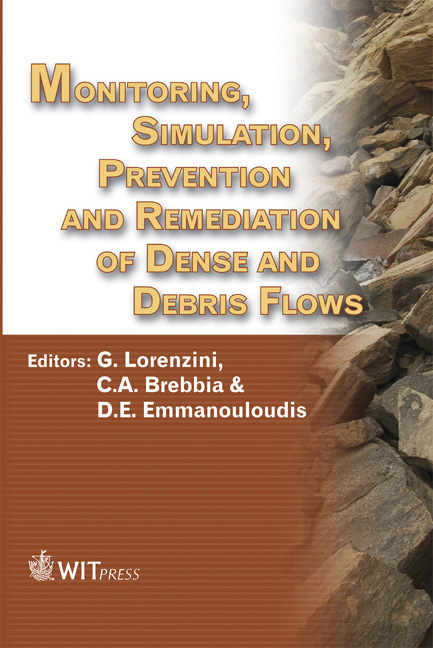Special Session Organised By D. De Wrachien Scope, Aims And Topics
Price
Free (open access)
Transaction
Volume
90
Pages
4
Published
2006
Size
256 kb
Paper DOI
10.2495/DEB060131
Copyright
WIT Press
Author(s)
Abstract
Special session organised by D. De Wrachien Scope, aims and topics The terms resource and natural disaster are a reflection of mankind’s perception of natural systems. When man recognises a natural system as useful, it becomes a resource whereas if it is potentially harmful, it is seen as a danger. In the absence of human settlement, however, there are neither resources nor dangers, but merely natural systems.1 In this context a disaster can be defined as an event where damage exceeds the capacity of the affected society to recover by its own means. This definition does not implicitly include the terms \“frequent” or \“exceptional” but merely implies that the size of a disaster is related to the specific society affected and underlines the fact that the weaker are usually the most severely affected by natural disasters.2 Water related natural disasters – to which the debris and hyper-concentrated flows belong – are mainly the result of physical processes, which cause disasters when they interact with human activities. The mitigation of such phenomena could, therefore, be achieved by reducing this interaction, by altering the natural system, the human system of both. The trend of increase in the environmental and economic impacts of natural disasters, and in particular the water related ones, has continued during the past half century. Over the last 30 years, although the number of lives lost by natural disasters has declined, the number of people affected and estimated economic losses have been steadily increasing. Debris and hyper-concentrated flows result from the interaction of hydrological processes with geological process and are triggered when soils get saturated and the stability of the slope is no longer maintained. These flows are among the most destructive of all water-related disasters. They mainly affect mountain areas in a wide range of morphoclimatic environments and in recent years have attracted more a more attention from the scientific and professional communities and concern from the public awareness, due to the increasing frequency with which they occur and the death toll they claim. 1 Lorenzini, G. and Mazza M. 2004 Debris Flows, Phenomenology and Rheological Modelling, WIT Press, Southampton, UK. 2 4 th World Water Forum 2006 – Framework theme 5
Keywords





